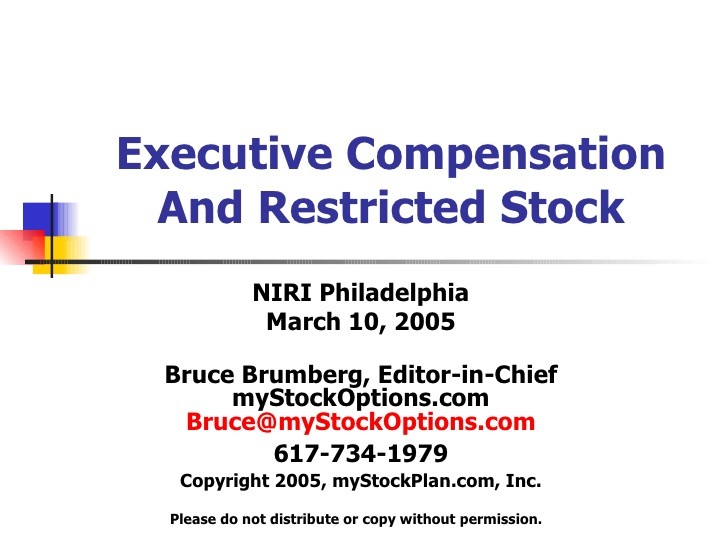Case Study Restricted Stock
Post on: 3 Май, 2015 No Comment

Holding a concentrated position in a single stock may look good on paper and may be good for the moment but it also may expose you to more risk than you want to take.
Ms. Havisham, in her mid-50s, is a senior executive of a publicly held company in which she holds a large block of stock that she can not sell for the next several years. While the stock trades on the Nasdaq, no active options market exists. And even if she could use options to hedge her stock directly, she probably wouldnt do so it might appear to indicate a lack of confidence in her company.
However, while confident that her company will continue to do well, Ms. Havisham nevertheless realizes shes assuming significant market risk by having a large portion of her net worth invested in a single holding. Thus, she is seeking a way to protect herself against the risk that her companys stock may take a tumble.
In conferring with her Contango advisor, Ms. Havisham learned of several strategies that might enable her to reduce those risks without selling her stock. One of the strategies her advisor suggested they explore was putting into place a synthetic hedge a selection of marketable assets that together mirror the behavior of the designated stock. By selling short the hedge components, this strategy could provide significant protection against downward movements in the price of her stock.
As a first step toward determining whether this might be an effective tool for Ms. Havisham, Contango strategists analyzed the stocks behavior relative to the relevant industry and market indices as well as to the stock of other companies in the sector.
After concluding that such a hedge could be effective, they, with Ms. Havishams approval, designed and implemented a synthetic hedge by:
1. Identifying and collecting comparable publicly traded companies and related index shares.
2. Screening & cleaning
Refining criteria;
Discarding candidates that are thinly traded or difficult to short.
3. Using quantitative techniques to create a proxy basket designed to mirror the hedge targets behavior.
4. Determining how best to balance the strategy to mitigate risk.
5. Selling short or buying puts on the basket in the marketplace.
6. Actively managing the short position.
Not all concentrated holdings can or
should be hedged in this way.

Such holdings include:
1. Stocks that are hard to hedge using traditional methods because either there are no exchange traded options available, or because the stock is hard to borrow rendering it a poor candidate for investment banks to write over-the-counter collars and prepaid forwards on.
2. Stocks owned by insiders, board members, or other sympathizers for whom hedging would either be or have the look of being inappropriate.
3. Stocks from industries where there are large pools of available hedge candidates with relatively low dividend yields (shorts must pay out this dividend).
4. Positions that are so large as to warrant diversifying hedging techniques between traditional hedges (puts, collars, etc.) and non-traditional hedges such as synthetic baskets.
The result: Ms. Havisham is able to hold on to her stock, but can feel confident that, should it fall dramatically in value, that decline will be offset by the hedge. Of course, it also means that should the stock soar indefinitely, having the hedge in place will cut into her profits. But, as our CEO is fond of saying, Theres no such thing as a free lunch.
Synthetic Hedge Results: 4/18/05 — 8/22/05














